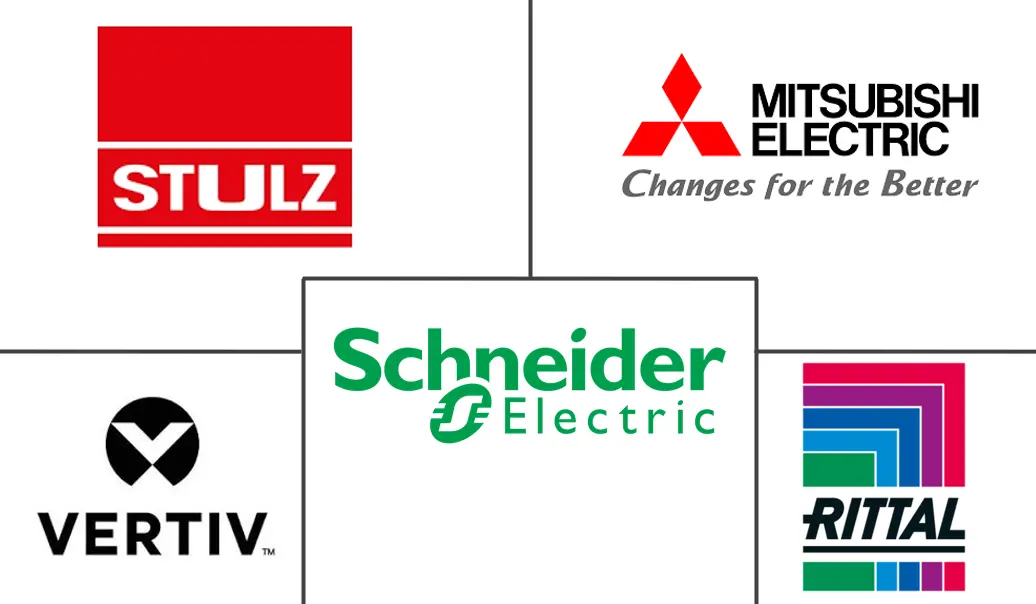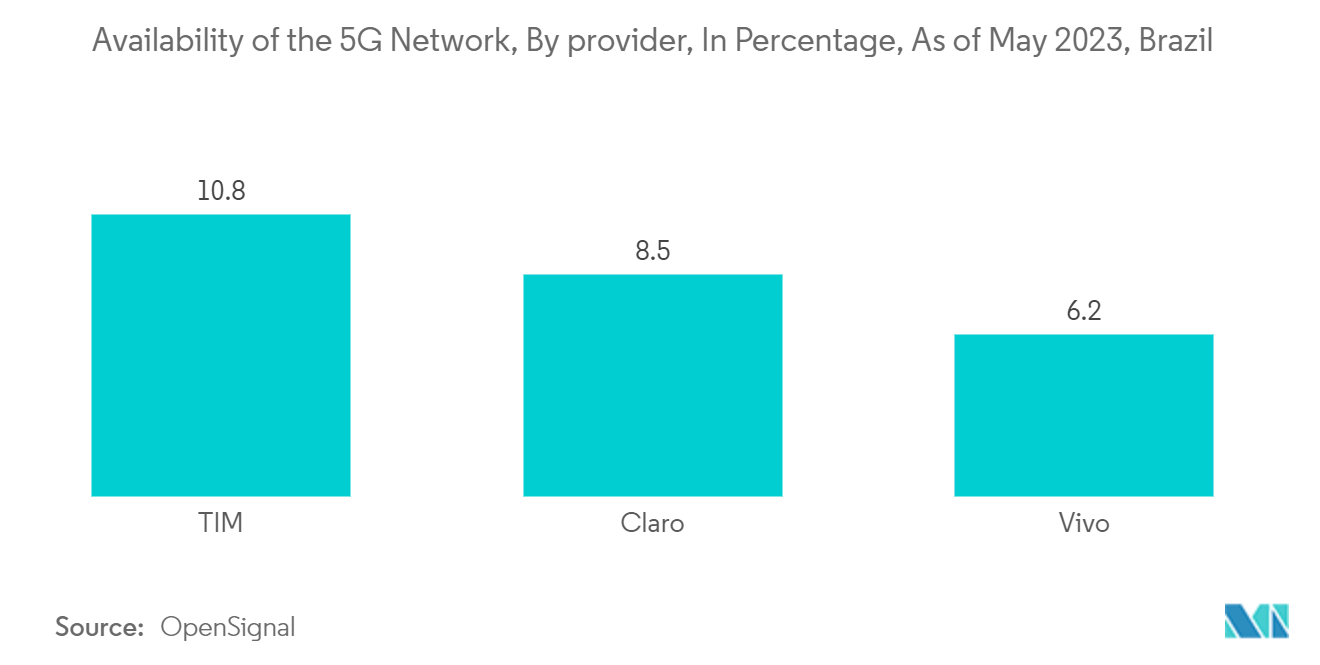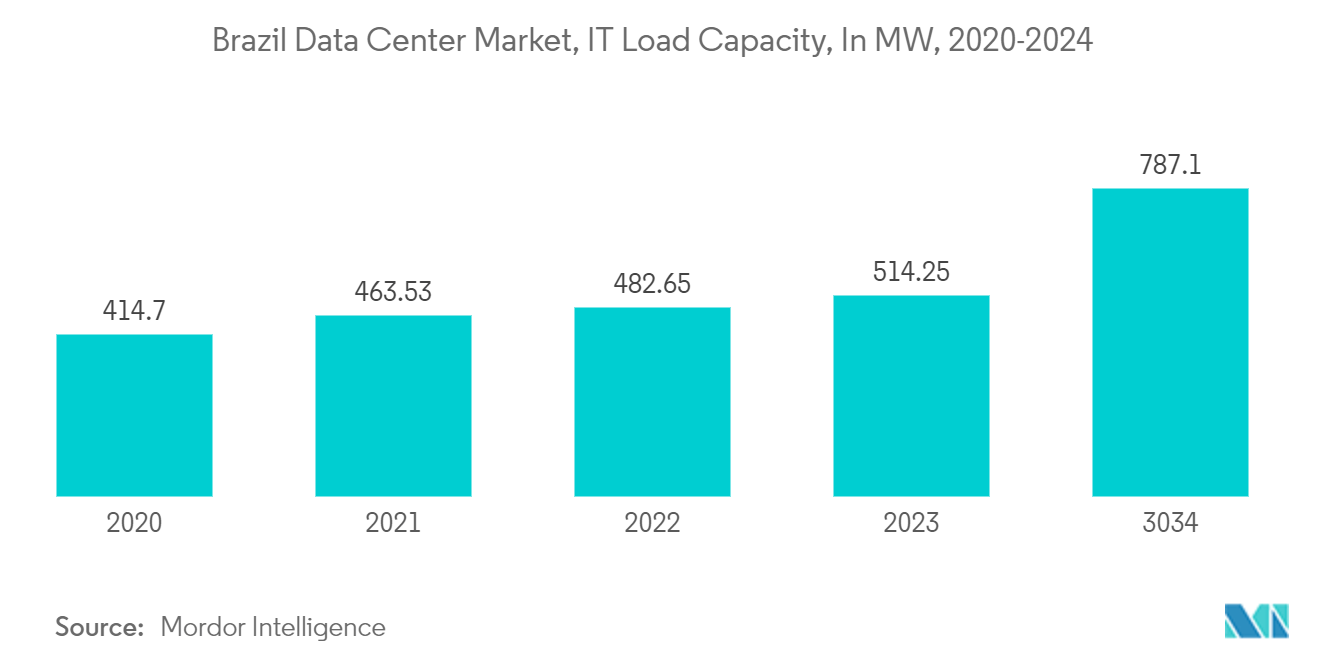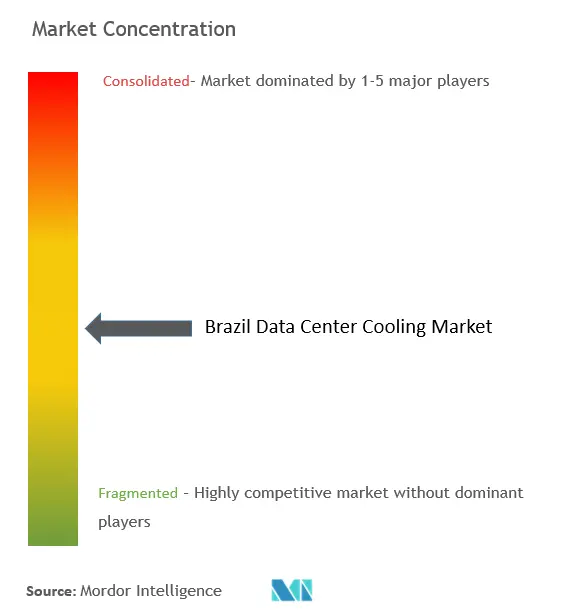Brazil Data Center Cooling Market Analysis
The Brazil Data Center Cooling Market size is estimated at USD 0.23 billion in 2025, and is expected to reach USD 0.61 billion by 2031, at a CAGR of 17.3% during the forecast period (2025-2031).
- The increasing demand for cloud computing among SMEs, government regulations for local data security, and growing investment by domestic players are major factors driving the demand for data centers.
- Under Construction IT Load Capacity: The upcoming IT load capacity of the Brazilian data center market is expected to reach more than 1,390 MW by 2030.
- Under Construction Raised Floor Space: The country's construction of raised floor area is expected to increase above 4.9 million sq. ft by 2030.
- Planned Racks: The country's total number of racks to be installed is expected to reach above 249,000 units by 2030.
- Planned Submarine Cables: There are many under construction. One such submarine cable that was estimated to start service in 2023 is Firmina, which stretches over 14,517 km with landing points in Las Toninas, Argentina, Praia Grande, Brazil, Myrtle Beach, SC, the United States, Punta del Este, Uruguay.
- The average winter temperature is between 13 °C (55 °F) and 18 °C (65 °F). The average summer temperature is between 22 °C (72 °F) and over 26 °C (79 °F). Winters can vary widely across the country, with frequent cold, fog, and snow periods in the north and more pleasant weather in the south. Depending upon climatic conditions, the DC cooling is done in the DC facilities.
Brazil Data Center Cooling Market Trends
The IT and Telecom Segment is Expected to Have Significant Market Share
- Brazil’s Information and Communications Technology (ICT) sector is at the forefront of innovation, driving remarkable progress and creating a future-proof environment. Utilizing state-of-the-art technologies, the ICT sector opens up a world of possibilities while facing the challenges that define its growth.
- In 2023, Brazil's ICT industry raked in 708 billion reais (USD142 billion), marking a 5.9% real-term growth from 2022. Breaking down the figures, the IT segment led the charge, contributing 422 billion reais, encompassing software, cloud services, hardware, and digital technologies. On the other hand, telecom services, covering voice, data, and network implementation, accounted for the remaining 285 billion reais.
- Further, in 2023, the software market is poised for a 15.1% growth, propelled by the rising demand for security, data management, artificial intelligence (AI), and enhanced customer experience (CX) solutions. Notably, Software as a Service (SaaS) is set to dominate, with an anticipated 27.6% surge, accounting for half of all software sales. Concurrently, general IT services, encompassing application management, consulting, and systems integration, are forecasted to witness a 6.7% uptick.
- In terms of Telecommunication expansion, In April 2024, the Brazilian government announced a strategic partnership with a prominent Mexican telecommunications entrepreneur to bolster its optic fiber and 5G infrastructure. The entrepreneur has committed to injecting an estimated BRL 40 billion into Brazil over the coming five years. Considering the above instances, the IT and Telecom segment is poised to generate a heightened demand for storage in the foreseeable future. This surge in storage needs is anticipated to boost the demand for data centers, subsequently fueling the need for data center cooling solutions.
Liquid Cooling to Have Significant Share
- In data centers, liquid cooling offers many benefits and is an attractive option for high-performance cooling computing environments. The use of liquid cooling is more energy-efficient compared with conventional air conditioning. It reduces the need for overcooling and improves the energy efficiency of data centers by providing precise temperature control.
- The emerging cloud technology in a wide range of data centers is one of the major factors driving the overall demand for data center systems and technologies, thereby fueling the demand for liquid cooling in the region. Cloud technology is highly flexible because it is accessible by different devices and offers easy recovery of lost data. At the same time, cloud computing provides high computational speed, which helps other businesses grow. The surge in online retail or e-commerce demand has acted as a demand catalyst for the data center industry. Customers want more personalized data, and data center service providers are expanding their footprints by catering to these demand trends.
- Also, the increasing workloads and rising demand for high-performance computing (HPC) applications generate significant heat in data centers, leading to an increased need for liquid cooling solutions in the country. For instance, in May 2024, Digital Realty unveiled its pioneering liquid-to-chip cooling technology, marking a significant evolution in supporting high-density deployments. This cutting-edge advancement is a major stride in tackling the challenges of managing high-density workloads, especially in artificial intelligence (AI) and data-heavy applications.
- Also, the region's expanding facilities, equipped with substantial IT load capacities, are driving an increased demand for liquid cooling solutions. In August 2024, Scala Data Centers, based in Brazil, inaugurated the second phase of its data center campus located in Sao Paulo. This phase not only sees the operational launch of two new buildings, SGRUTB08 and SGRUTB12, but also includes the ongoing construction of three additional buildings: SGRUTB09, SGRUTB10, and SGRUTB67. These developments represent a significant 158 MW of IT capacity, backed by a substantial investment commitment of USD 1.3 billion. Such instances in the market are expected to push the demand for liquid cooling solutions in the country during the study period.
Brazil Data Center Cooling Industry Overview
The Brazilian data center cooling market is fragmented as the benefits offered by the technology and support from the government by imposing efficiency regulations on data centers are expected to help the growth of the data center cooling market directly. Market penetration is growing with a strong presence of major players such as Stulz GmbH, Rittal GMBH & Co. KG, Schneider Electric SE, Vertiv Group Corp., and Mitsubishi Electric Corporation.
April 2024: Carrier Global Corporation partnered with Strategic Thermal Labs to develop direct-to-chip cooling technology. Under this partnership, Carrier will leverage the advancement in direct-to-chip technology and incorporate it into its data center cooling solutions.
December 2023: Vertiv acquired Cooltera Ltd, a manufacturer of coolant distribution units (CDU) and secondary fluid networks (SFN). This acquisition is expected to improve the existing DC cooling solutions offered by the company.
Brazil Data Center Cooling Market Leaders
-
Stulz GmbH
-
Rittal GMBH & Co. KG
-
Schneider Electric SE
-
Vertiv Group Corp.
-
Mitsubishi Electric Corporation.
- *Disclaimer: Major Players sorted in no particular order
Brazil Data Center Cooling Market News
- March 2024: German heat exchanger manufacturer Kelvion and US immersion cooling company Rosseau announced a partnership to deliver enhanced immersion cooling solutions for the high-performance computing (HPC) market.
- January 2024: Data center firm Aligned launched a new liquid cooling system called DeltaFlow. The liquid cooling technology is designed to support high-density compute requirements and supercomputers and can cool densities up to 300 kW per rack. The new DeltaFlow system works simultaneously with Aligned’s air-cooled Delta technology, enabling no change in power delivery or existing data hall temperatures.
Brazil Data Center Cooling Industry Segmentation
Data center cooling is a set of techniques and technologies to maintain optimal operating temperatures in data center environments. This is important because data centers house many computer servers and network equipment that generate heat during operation. Efficient cooling systems are used to dissipate this heat and prevent equipment from overheating, ensuring continued reliable operation of the data center. Various methods, such as air conditioning, liquid cooling, and hot/cold aisle containment, are commonly used to control temperature and humidity in data centers.
The Brazilian data center cooling market is segmented by technology (air-based cooling (chiller and economizer, CRAH, cooling towers, and other air-based cooling), liquid-based cooling (immersion cooling, direct-to-chip cooling, and rear-door heat exchanger)), type of data center (hyperscaler, enterprise, and colocation), and end-user industry (IT and telecom, retail and consumer goods, healthcare, media and entertainment, federal and institutional agencies, and other end-user industries). The report offers market size forecasts for the Brazilian data center cooling market in value (USD) for all the above segments.
| By Cooling Technology | Air-based Cooling | Chiller and Economizer | |
| CRAH | |||
| Cooling Tower (covers direct, indirect & two-stage cooling) | |||
| Other Air-based Cooling | |||
| Liquid-based Cooling | Immersion Cooling | ||
| Direct-to-Chip Cooling | |||
| Rear-Door Heat Exchanger | |||
| By Type | Hyperscalers (Owned and Leased) | ||
| Enterprise (On-premise) | |||
| Colocation | |||
| By End-user Industries | IT and Telecom | ||
| Retail and Consumer Goods | |||
| Healthcare | |||
| Media and Entertainment | |||
| Federal and Institutional Agencies | |||
| Other End-user Industries | |||
Brazil Data Center Cooling Market Research FAQs
How big is the Brazil Data Center Cooling Market?
The Brazil Data Center Cooling Market size is expected to reach USD 0.23 billion in 2025 and grow at a CAGR of 17.30% to reach USD 0.61 billion by 2031.
What is the current Brazil Data Center Cooling Market size?
In 2025, the Brazil Data Center Cooling Market size is expected to reach USD 0.23 billion.
Who are the key players in Brazil Data Center Cooling Market?
Stulz GmbH, Rittal GMBH & Co. KG, Schneider Electric SE, Vertiv Group Corp. and Mitsubishi Electric Corporation. are the major companies operating in the Brazil Data Center Cooling Market.
What years does this Brazil Data Center Cooling Market cover, and what was the market size in 2024?
In 2024, the Brazil Data Center Cooling Market size was estimated at USD 0.19 billion. The report covers the Brazil Data Center Cooling Market historical market size for years: 2018, 2019, 2020, 2021, 2022, 2023 and 2024. The report also forecasts the Brazil Data Center Cooling Market size for years: 2025, 2026, 2027, 2028, 2029, 2030 and 2031.
Our Best Selling Reports
Brazil Data Center Cooling Industry Report
Statistics for the 2025 Brazil Data Center Cooling market share, size and revenue growth rate, created by Mordor Intelligence™ Industry Reports. Brazil Data Center Cooling analysis includes a market forecast outlook for 2025 to 2031 and historical overview. Get a sample of this industry analysis as a free report PDF download.







